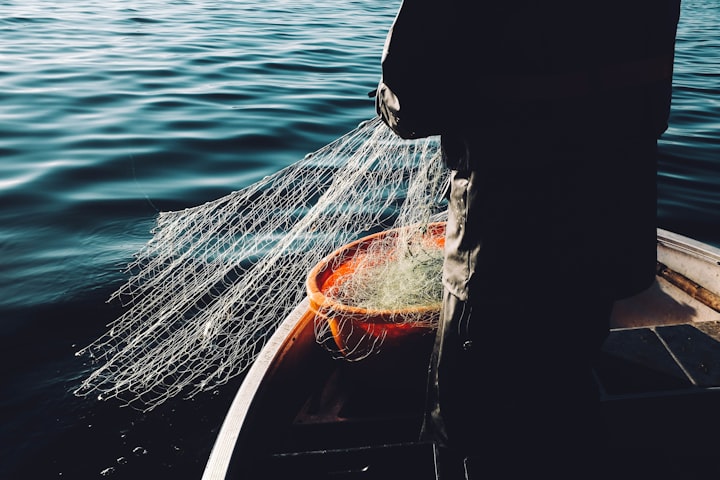
Fishing's long history reflects the development of human societies and technologies over thousands of years. Across many civilizations, fishing has been essential for trade, subsistence, and cultural significance.Brief overview of the history of fishing, from primitive to modern techniques are described below.
1. Primitive Fishing
Fishing was often a communal pastime, with diverse cultures growing their very own unique strategies based on nearby assets and needs.
Hand Gathering:
It's likely that early humans fished by hand, wading into shallow waters and using their hands or crude tools to catch fish.
Spears and Harpoons:
To catch fish in deeper waters, early fishermen created harpoons and spears.With these tools It was also possible to hunt larger aquatic animals.
2. Ancient Fishing Techniques:
Nets:
Nets were first widely used in ancient times. To catch more fish, different kinds of nets were used, including cast nets and seine nets.
Traps and Weirs:
Fish were made easier for fishermen to catch by being guided into small spaces by the construction of fish traps and weirs.In historic China, diverse fishing gear consisting of bamboo traps and silk nets had been advanced.
for more ancient fishing techniques read this article Traditional Fishing Methods.
3. Classical Civilizations:
Fishermen's Guilds:
With the formation of fishermen's guilds, fishing became organized in societies such as ancient Greece and Rome.
Aquaculture:
Building fish ponds and cultivating a variety of fish species was something the Romans did well before anyone else.
4. Medieval and Renaissance Periods:
Improved Gear:
Improved hooks and reel-based systems were among the fishing equipment innovations made during the medieval era.
Longlines:
As longlines with spaced-apart baited hooks gained popularity, fishermen were able to catch a wider range of fish.In Europe, the use of longlines with baited hooks connected at durations emerged as a famous technique for catching fish.
5. Age of Exploration (15th to 17th centuries):
Globalization of Fishing:
New fishing grounds were found throughout the Americas and other parts of the world as a result of European exploration.
Whaling:
The demand for whale oil for lighting a led to the development of whaling techniques.The improvement of deep-sea fishing strategies, such as the use of longlines and advanced tackle, allowed for extra efficient harvesting of ocean resources.
7. Industrial Revolution (18th to 19th centuries):
Mechanization:
with the introduction of steam-powered vessels,The Industrial Revolution brought significant changes to fishing enabling fishing in deeper waters.Innovations like the otter trawl, which allowed for huge-scale bottom trawling, revolutionized the way fish had been caught.
Trawling:
Trawling, a way regarding dragging a net through the water, have become extra typical for the duration of this period.
6. 20th Century and Beyond:
Technological Advancements:
Fishing became more efficient in the 20th century with the advent of radar, sonar, and other technological innovations.
Factory Trawlers:
Massive fish harvesting was made possible by large-scale industrial fishing operations using factory trawlers.
Sustainable Practices:
To address overfishing and environmental concerns, sustainable fishing methods have grown in importance in recent decades.
7. Modern Fishing:
Aquaculture Expansion:
Aquaculture's growth has made it a major player in the fishing industry by offering wild fish as an alternative.
Technological Integration:
In order to find and catch fish more quickly, modern fishing uses GPS, satellite technology, and high-tech gear.
Conservation Efforts:
To protect fish populations and marine ecosystems, efforts are being made to put conservation and sustainable fishing techniques into effect.
The history of fishing illustrates how economic, cultural, and technological influences have influenced the development of fishing methods over time, reflecting the dynamic interaction between humans and the aquatic environment.
There is a growing awareness of the need for responsible and sustainable practices to ensure the health of marine ecosystems and the availability of fish for upcoming generations.





Comments
There are no comments for this story
Be the first to respond and start the conversation.